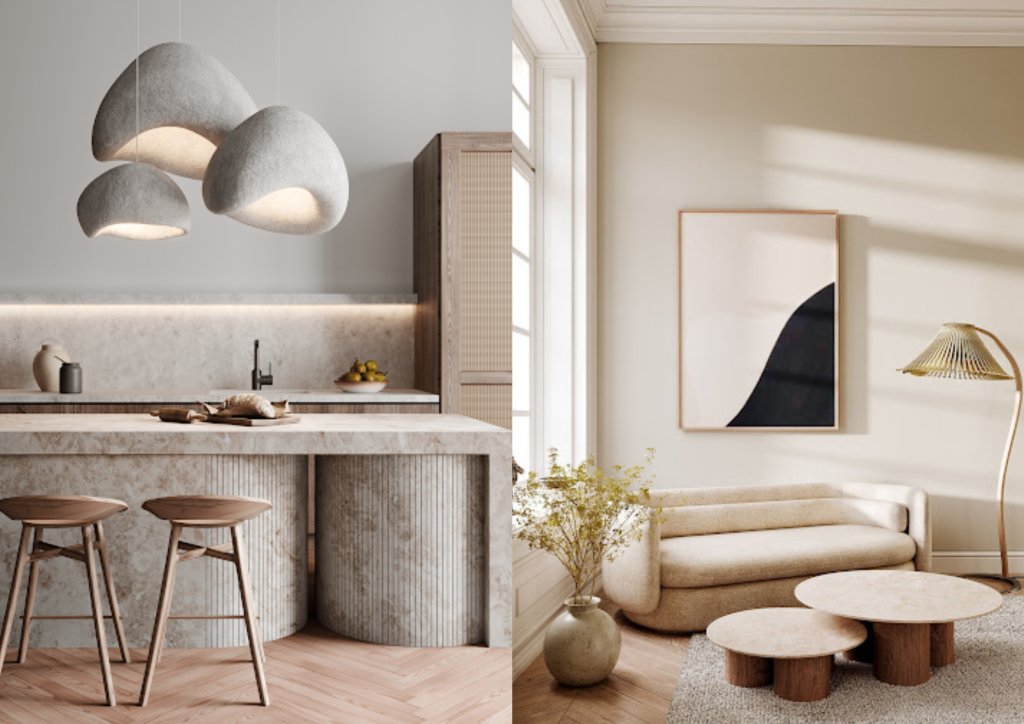There are many interior designs that you can adopt according to your taste. However, if you prefer a simple, aesthetic, functional, and space-saving interior design, the Japandi design is perfect for application in your home, including small-sized housing.
Currently, We will review Japandi designs in full, as well as various styles that fall into the Japandi design category. So, for those who are still confused about choosing the best interior design to apply at home, let’s take a look at the following Japandi design!
Japandi Philosophy

The Japandi design was adopted from two concepts: wabi-sabi and lagom. Wabi-sabi is a Japanese cultural philosophy that means beauty in imperfection. Meanwhile, lagom is a philosophy from Scandinavia that is a balanced lifestyle in various aspects, in the sense that it is present and reasonable.
Japandi combines two philosophies and emphasizes an efficient lifestyle with a simple, multifunctional, and aesthetically pleasing design that maximizes space and can be adopted in various dwelling sizes. It also aims to create a new harmonious style for your home.
Key Elements of Japandi Design
1. Simplicity
Simplicity is the key to Japandi Design. The aim is to make your room become as simple as possible, even with all the ornaments and decorations in the house. This approach will not make the house look cramped with everything that fills the room.
2. Combination of Lighting and Open Space
In Japandi Style, lighting is used to give a warm and cozy impression to the room. You don’t have to knock down walls for this, and using “low furniture” instead. For starters: low stools, armchairs, beds, and coffee tables. Feel free to mix and match different furniture to add contrasting textures and colors. The low furniture gonna helps to make the room more visually open, interesting, and authentic.
3. A Touch of Natural Color
The colors often used in Japandi design are white, gray, blue, and beige. Nowadays, there is a wider use of other neutral colors that are brighter. This aims to make the room feel wider, brighter, and provide a livelier atmosphere. In this concept, dark colors can be applied to room furniture. Don’t forget to mix and match everything to suit your style.
4. Easy on The Eyes
Adding furniture that mimics nature aims to make the house feel natural. This can be presented by using wood colors to cover the furniture. For example, our Sangetsu wallpaper and Honpo vinyl flooring. If you want to make the room feels brighter, use light wood color. Also, choose the furniture that does not have a complicated design, so that it can save space in a minimalist home.
Japandi Design Features
Not only does it offer space-saving and multifunctional characters, but Japandi design can also be combined with other interior styles. To find out more in detail, We will invite you to see four Japanese styles or sub-styles that can be adopted for housing, namely:
1. Japan in Natural

As the name implies, Japandi Natural emphasizes a natural look in the house through the use of light to medium colored wooden furniture. For example, oak, teak, and light walnut to be applied to dining chair sets, kitchens, or room partitions.
The use of light and neutral colors on fabrics and walls, such as beige, cream, and light gray, usually supports these natural materials. Additionally, natural Japanese designs often enrich their appearance by placing indoor plant pots to add a beautiful and natural impression. In Honpo, the best Natural Japandi Collection can be found here.
2. Modern Japandi

Furthermore, there is the modern Japanese style which not only prioritizes aesthetics but also has a touch of elegance and luxury. In this modern Japanese style, the predominance of colors used on walls or furniture usually tends to be dark, such as black, dark gray, or dark blue.
Additionally, the modern Japanese style strategically places marble motifs and gold color accents to create an appearance that is not excessive. Then, there are also medium to dark wood accents that become a single unit. Honpo has the great product to match this aesthetic, you can find out about it here.
3. Japandi Classic

The classic Japandi style features dynamic accents like curved profiles on walls, decorative shapes, and motifs in charming pastel colors. Similarly, the classic Japanese style applies neutral colors to the furniture, such as white combined with light to medium-colored wood. It is best to pain the classic Japandi style with our eco-friendly and simple wallpaper, which you can found in here.
4. Japandi Industrial

The industrial Japanese style features a simple, masculine, and bold impression, closely related to industrial interior design. It uses raw materials such as black iron, wood, and exposed brick, as well as multifunctional compact furniture made of medium-dark wood to save space.
Does the article above interest you in adopting a simple yet aesthetic Japanese interior design? Find a variety of wallpaper at HONPO to support your Japandi interior design. House is a place where beautiful moments begin. So, create a comfortable home to make your family’s moments more memorable!

